I never tire of watching the opening credits to David Lynch’s 1992 masterpiece, Twin Peaks – Fire Walk With Me. The slow zoom out from a snow-filled television screen while a sultry jazz trumpet plays Angelo Badalamenti’s music is hypnotic. For years, I’ve wondered what television set was used for this scene. Well, grab your Swanson T.V. dinner and tune in as I finally have an answer.
OPENING CREDITS

The film opens with a cloudy blue image filling the entire screen.
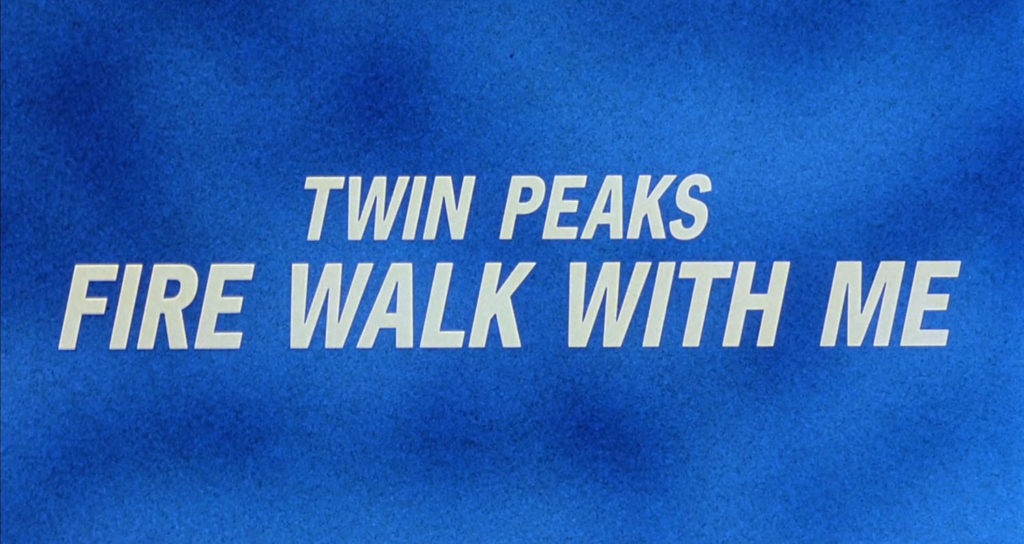
After a beat, the film’s title appears in white lettering. It’s followed by actor and production credits.

Slowly, the camera zooms out, filling the screen with more blue-hued static.
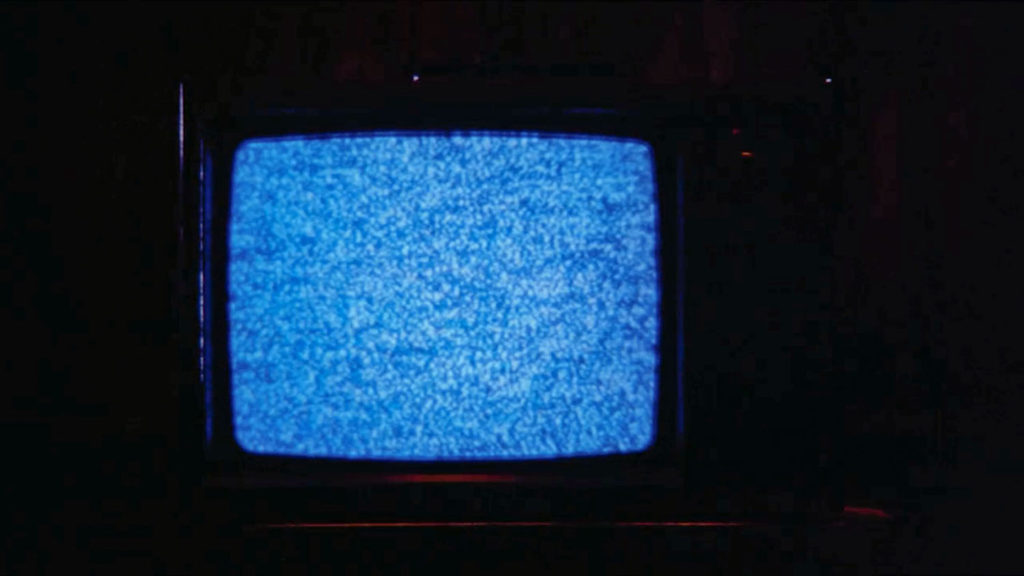
After the “Directed by David Lynch” credit appears, we catch a moment of a television set in shadow with a screen filled with dancing static. Then….
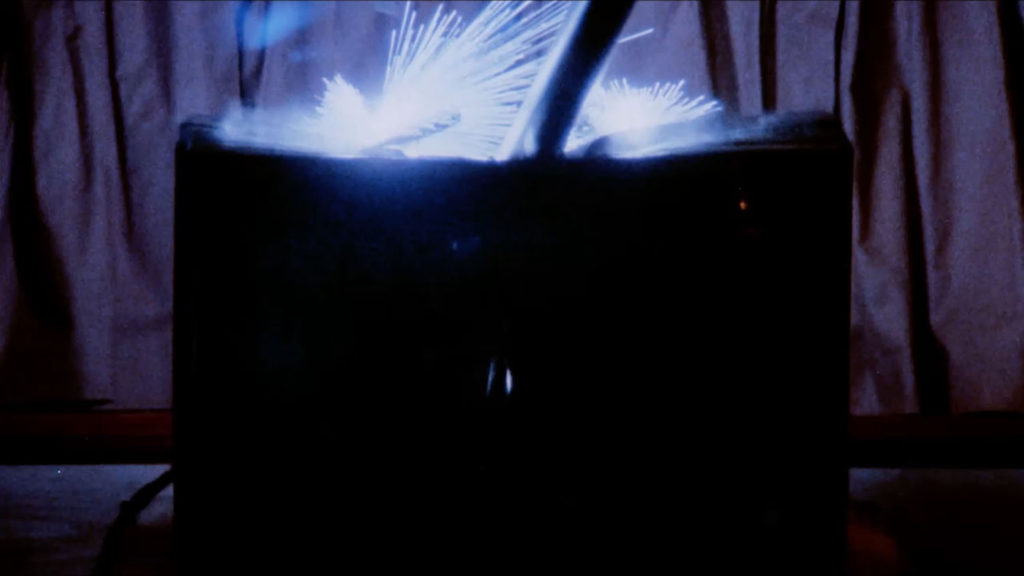
BAM! Something hits the top of the television set causing it to explode.
Interestingly, the film’s script from August 8, 1991 makes no mention of this opening scene. It immediately cuts to Teresa Banks’ body floating down Wind River.
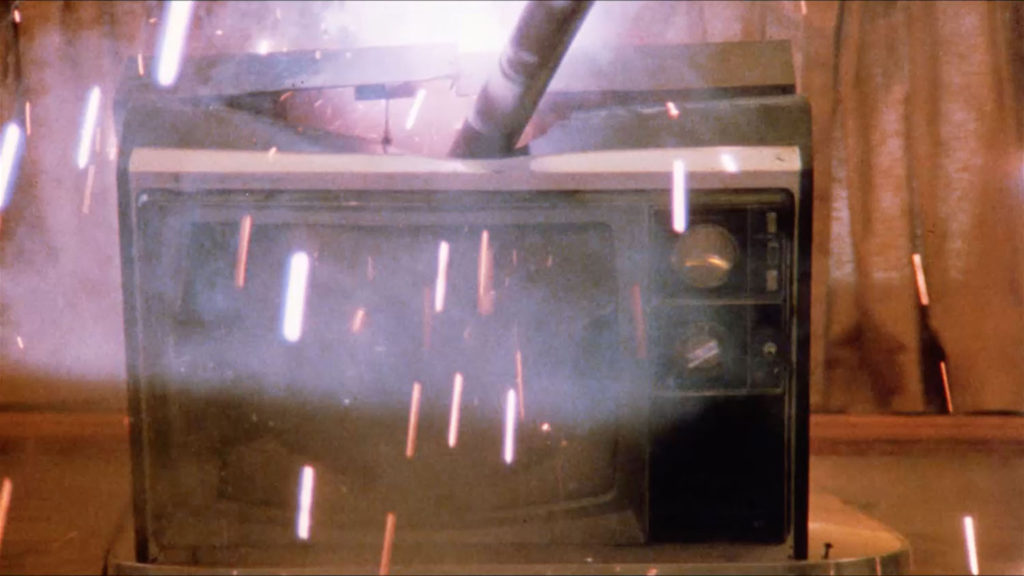
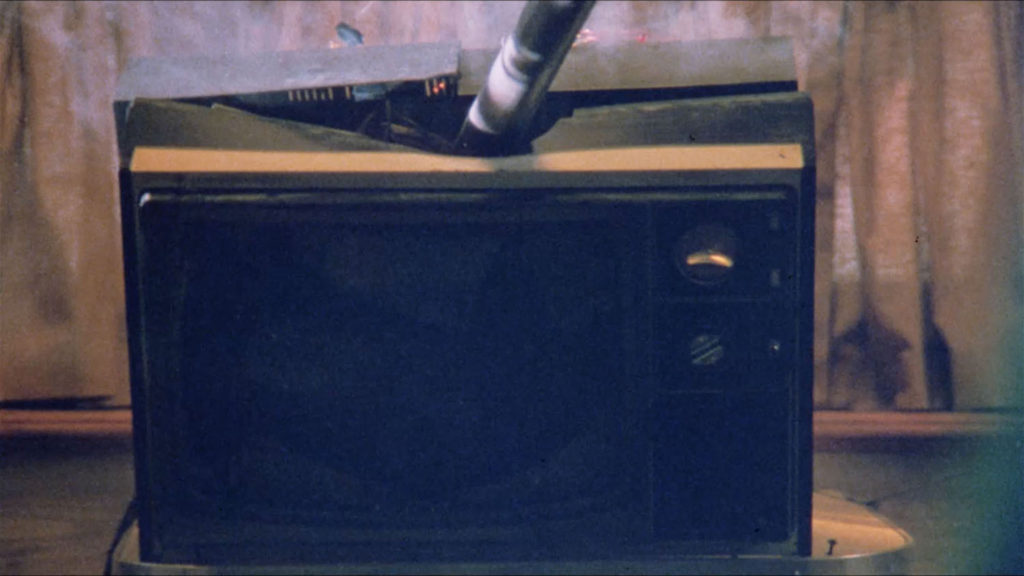
The television getting smashed was shot on November 1, 1991 along with several pick-up and insert shots. They were all filmed at City Studios in Van Nuys, California after production had wrapped in the Seattle area.
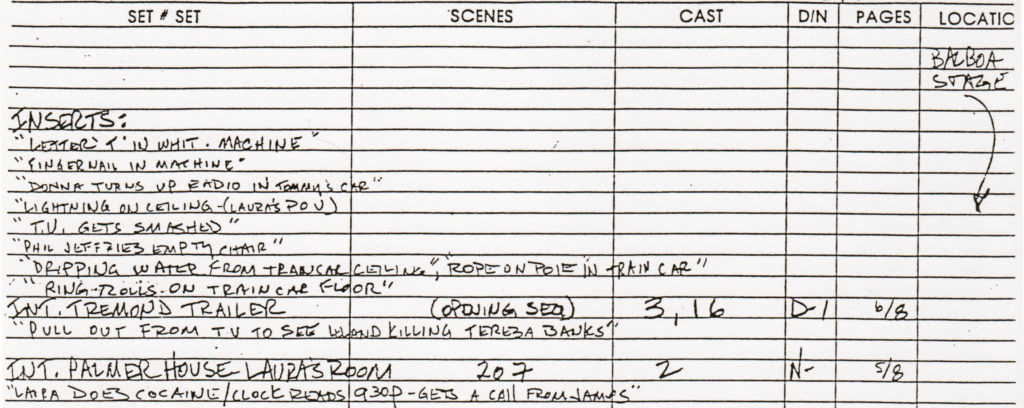
You can see “T.V. Gets Smashed” on this call sheet.
IDENTIFYING THE TELEVISION
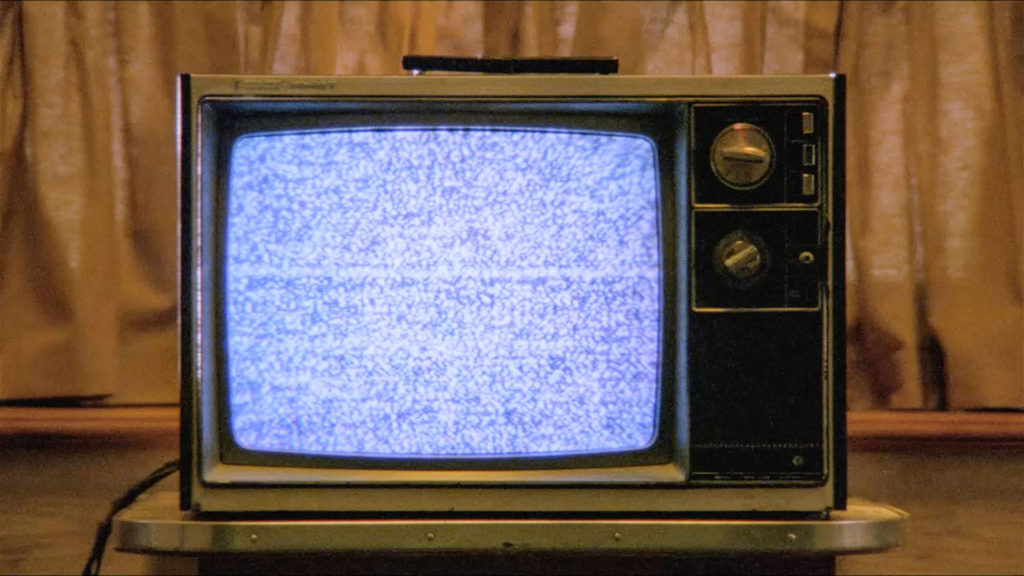
To help me identify the television set, I used a brief shot from later in the film when Leland Palmer remembers the night with Teresa Banks. It’s a slightly longer take from the opening credits.
I edited the two scenes together as I wanted to see if the television being destroyed was the same take. The second exploding television seems to be the same as the first (in other words, they didn’t destroy two T.V.s).
First, I tried searching Google Images but did not find a match. Then, I turned to eBay image search via their app. More endlessly scrolling with no match. The television design seemed like it was made in the 1970s so I searched for “1970s televisions with knobs” and other phrase combinations. Finally, I turned on the amazing Criterion Collection Blu-ray release of the film on my 75-inch television. Going frame by frame, I saw what I thought was an identifying mark – Zenith.
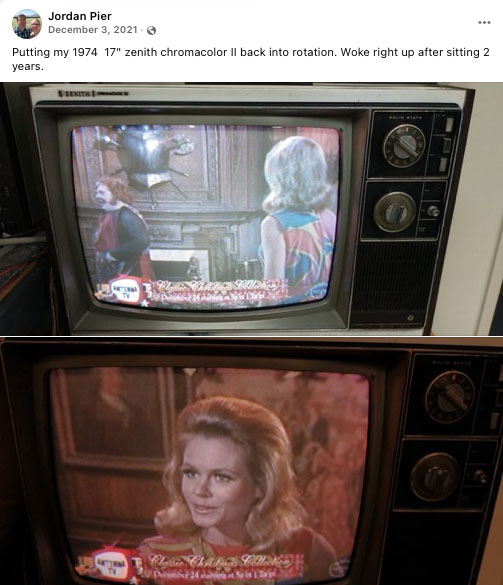
Hopping on Facebook, I found a “Vintage TV Collectors” group and searched “Zenith.” It didn’t take long to find a posting by Jordan Pier from December 3, 2021 – a 1974 17-inch Zenith Chromacolor II television! The only minor difference was the top nob of Teresa’s television looks different (it could have been replaced).
That match unlocked everything.
And now, a word from our sponsor…
ZENITH TELEVISION
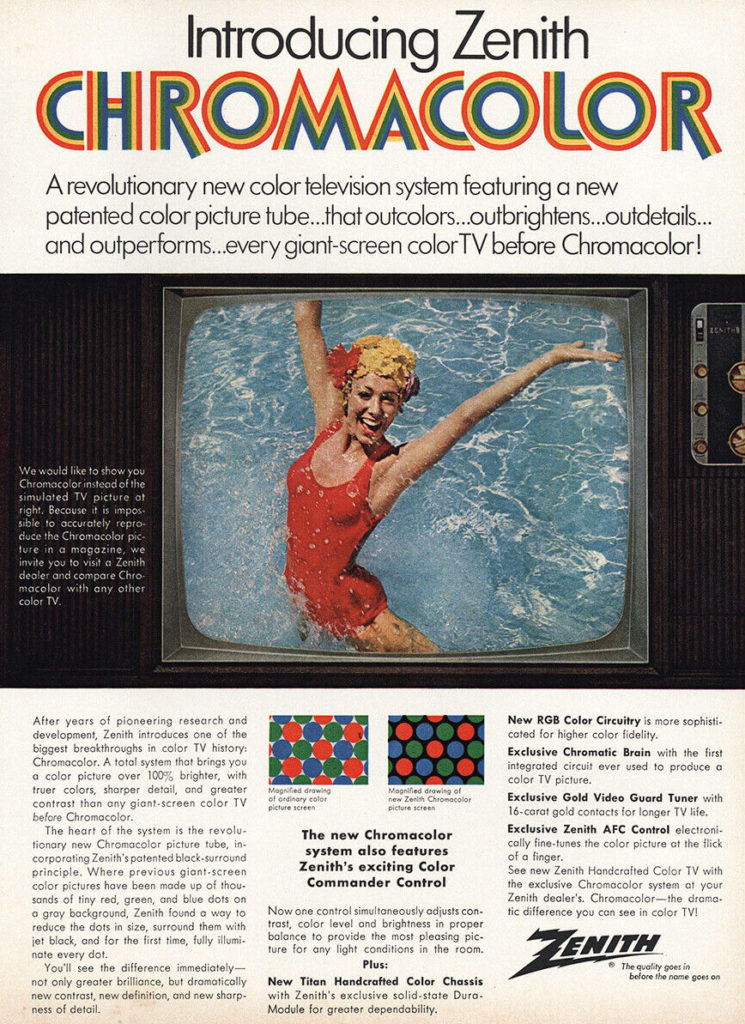
Shortly after World War I in 1918, two young radio amateurs, Ralph Matthews and Karl Hassel, set up a “factory” on a 28-square-foot kitchen table and began making radio equipment for other amateur radio enthusiasts. Originally named Chicago Radio Labs until 1923, the company’s name became Zenith, “the highest point, ” which was derived from the call letters of the amateur radio station, 9ZN, that they operated. Their tools were pliers, screwdrivers, a hand drill, and a soldering iron that they heated over a burner of a gas stove.
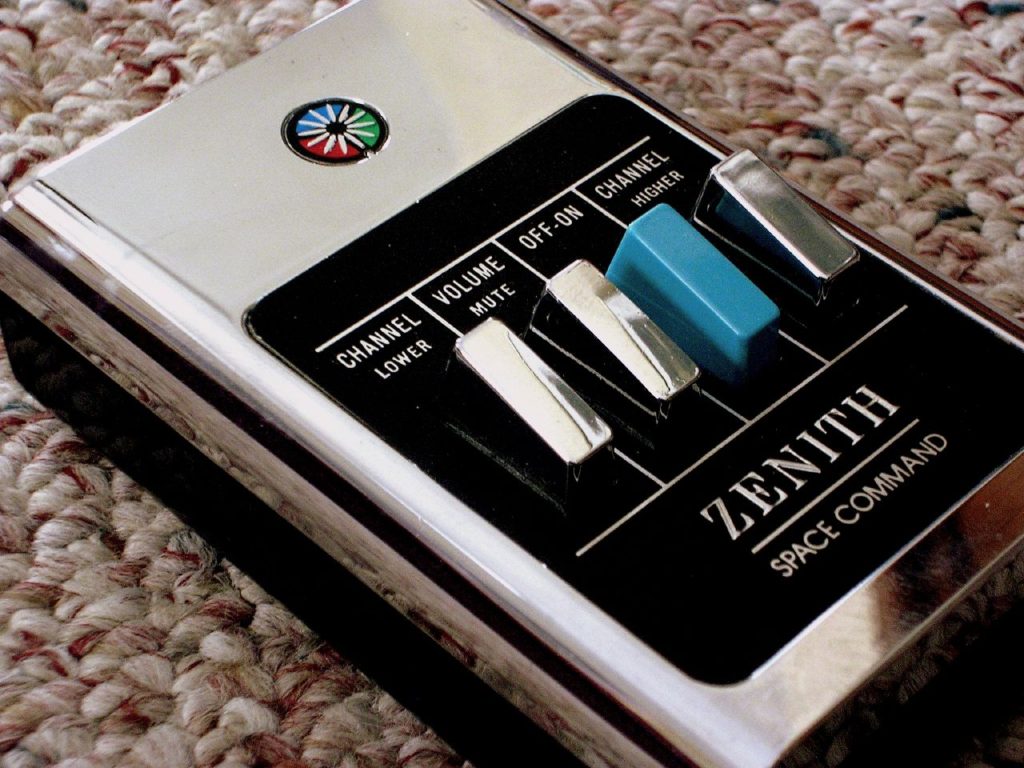
The company grew in subsequent years and made both “color and black-and-white televisions, stereophonic music systems, radios, hearing aids and associated testing equipment, and other special electronic products.” They were the first company to introduce a wireless remote control in 1956 called the Space Command.
In 1969, Zenith announced a patented “new generation” 23-inch diagonal Chromacolor TV picture tube, which was developed by a team of Rauland scientists, a subsidiary of Zenith at the time. The tube promised to deliver a picture brighter and with greater contrast than previous tubes of its size.
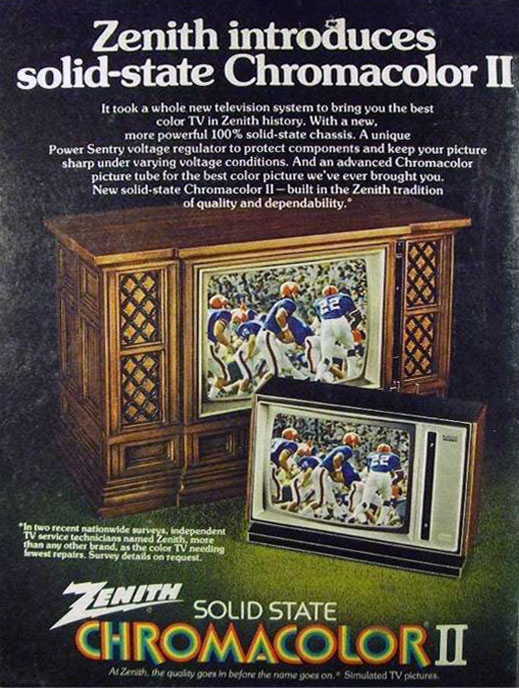
A year later, they developed a unique light-emitting diode which emitted virtually any color of the visible spectrum. They also started producing two new Chromacolor tube sizes, the 19- and 25-inch diagonally. In 1971, the first 16-inch diagonal compact Chromacolor tube was introduced.
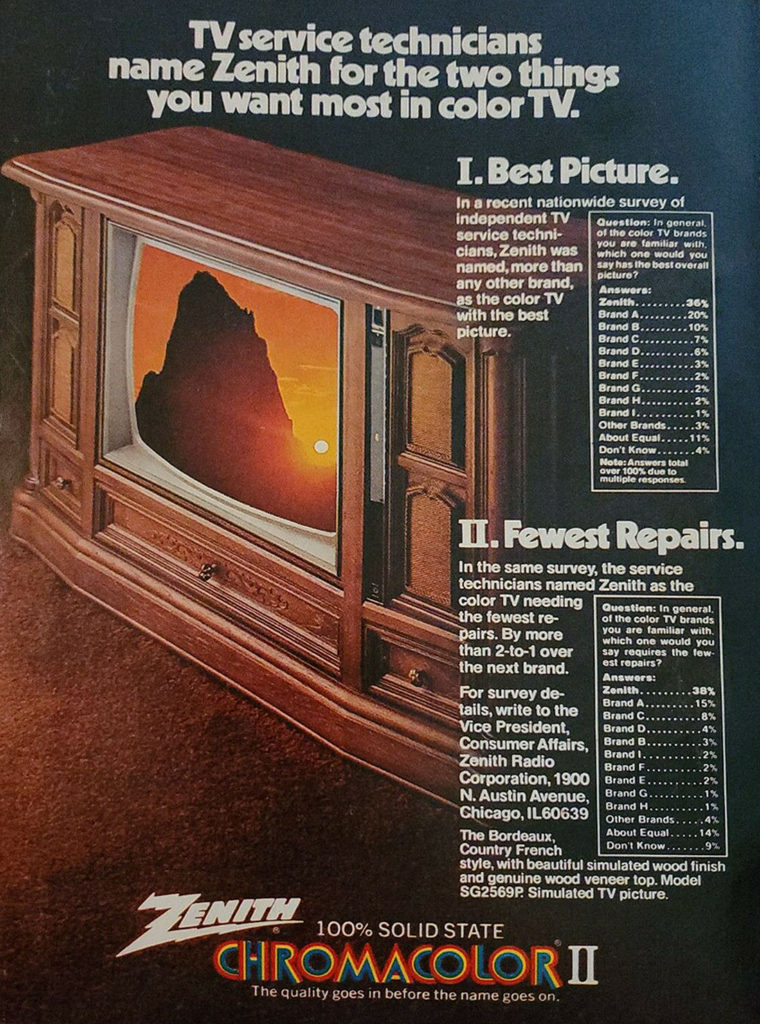
A brilliant new super Chromacolor TV picture tube was released in 1972 which was eventually branded under Chromacolor II. This tube provided a “major step-up in brightness, contrast, picture detail, and richness of color.”
The advanced tube was offered in four different screen sizes – 16-, 19-, 23- and 25-inch diagonal and featured a “new iris mask design, new more brilliant phosphors, and new electron gun accuracy.” Fancy!
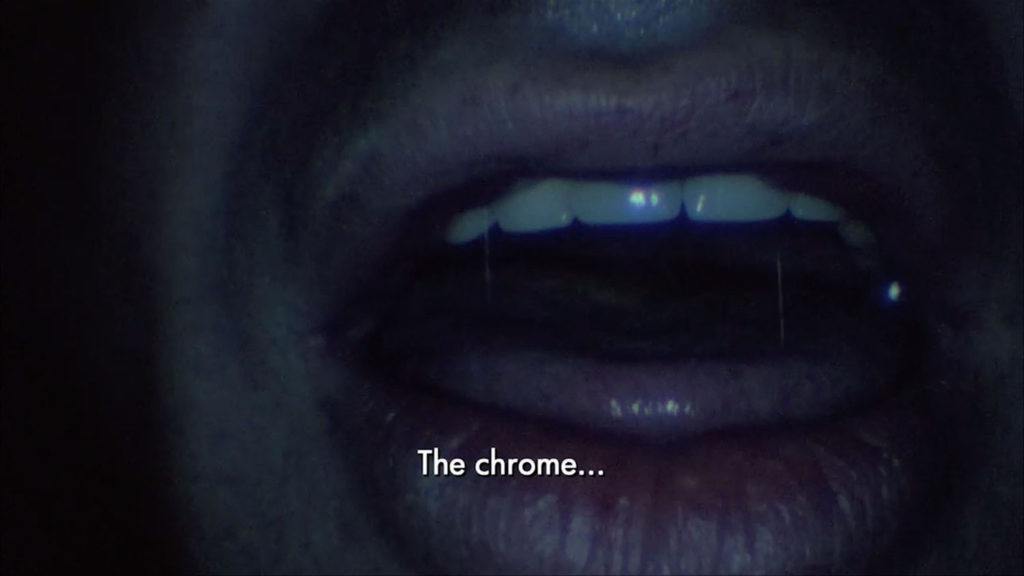
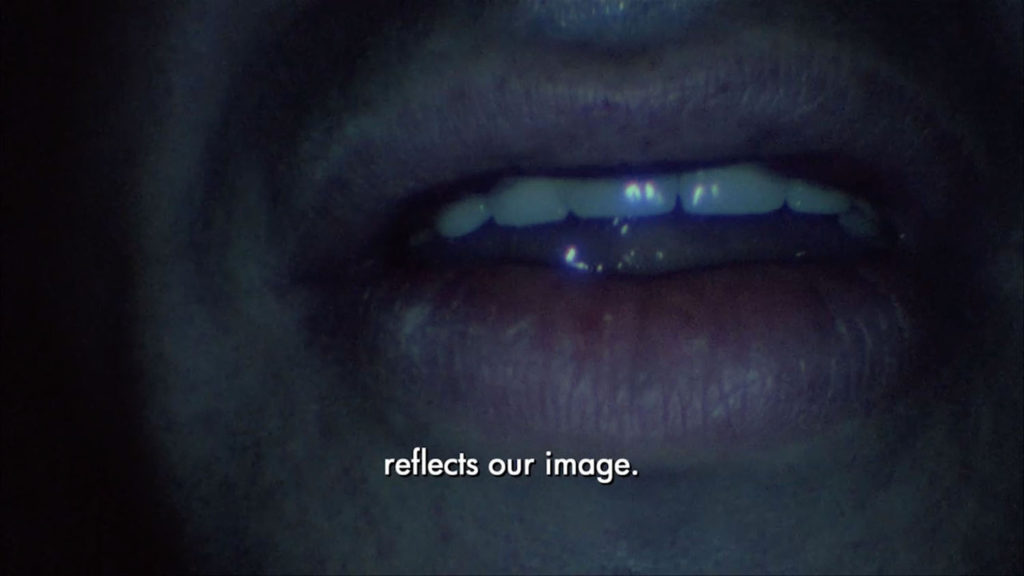
All this talk about “Chromacolor” has me thinking of this scene from The Missing Pieces – “The chrome reflects our image.”
We now return to the regularly scheduled program already in progress…
1974 ZENITH TELEVISION
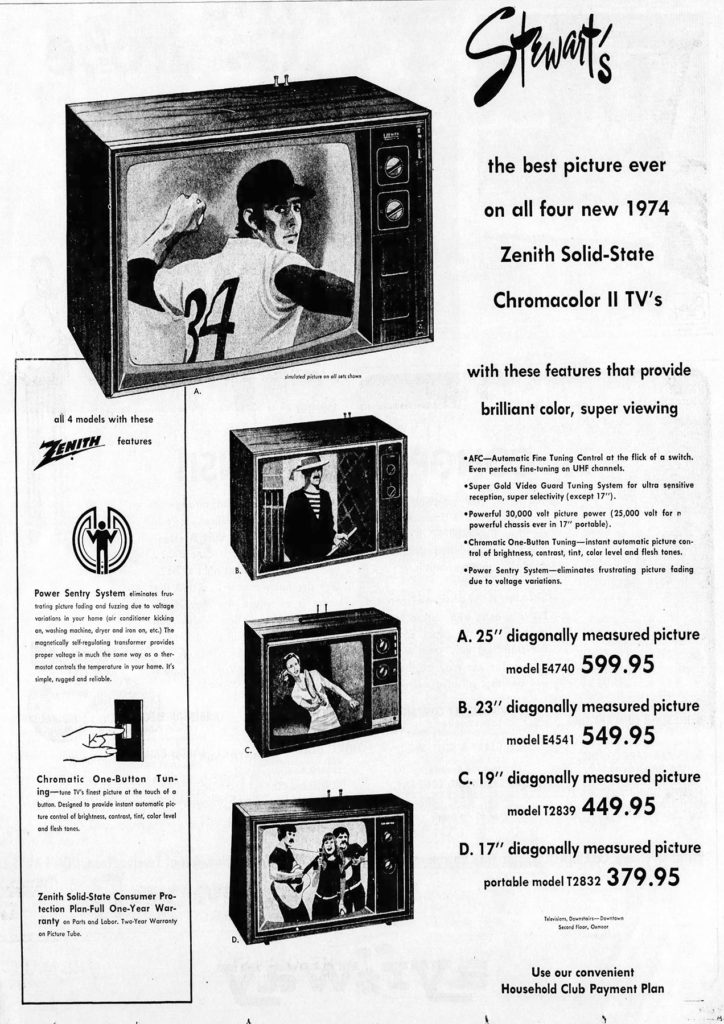
An advertisement in the Courier Journal from November 4, 1973 showed the 19-inch Zenith television (model T2839), and a 17-inch Zenith television (model T2832). Both of these sets were brand new for 1974.
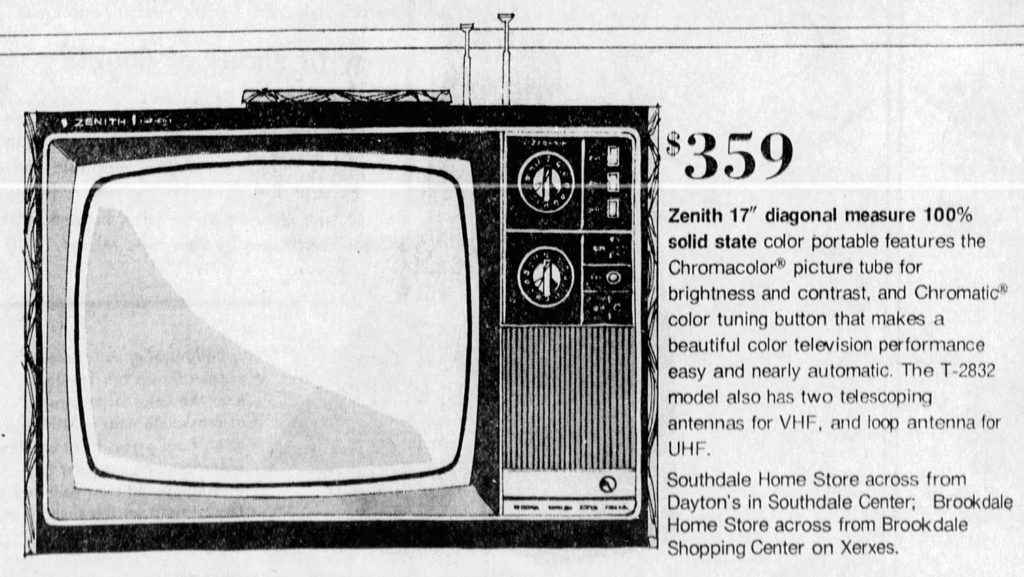
I believe the version used in the film is a 17-inch as seen in this Drayton’s advertisement from June 20, 1974.
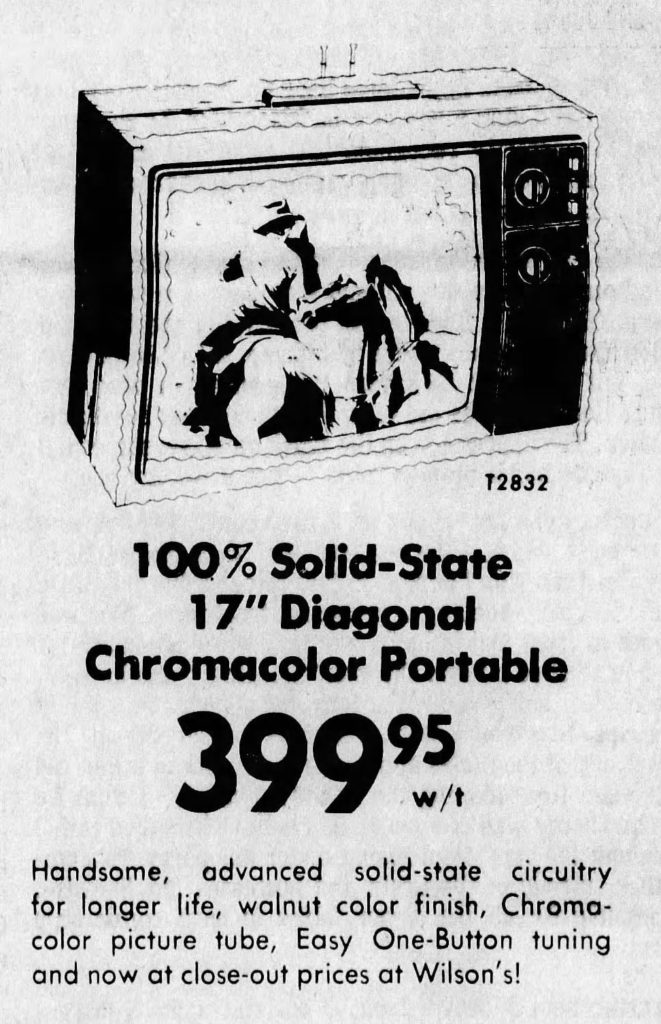
Wilson’s advertised the television a few months later on October 24, 1974.
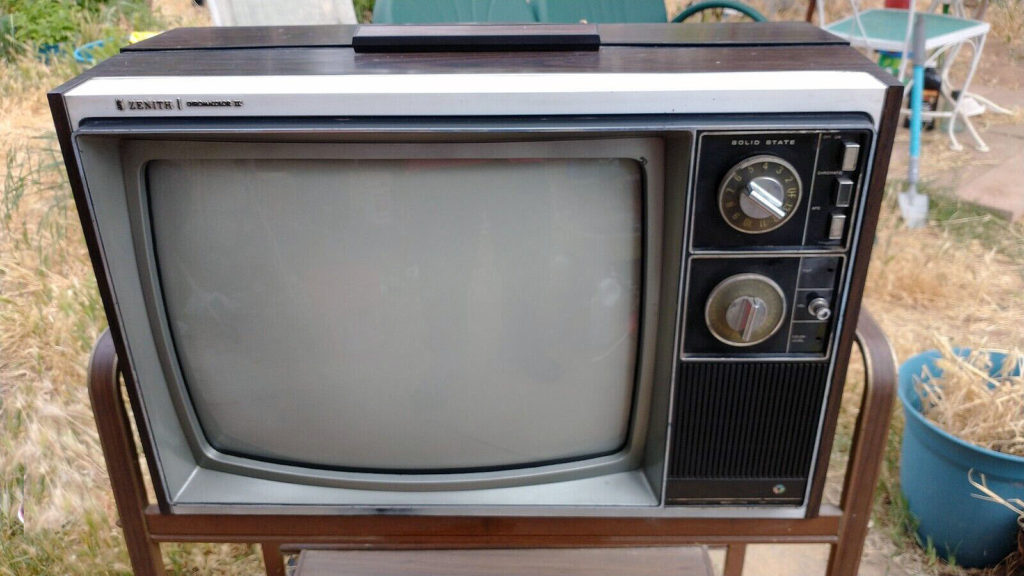
Here is a full-color look from someone recently selling the television on eBay. Yes, I’m tempted to buy it.
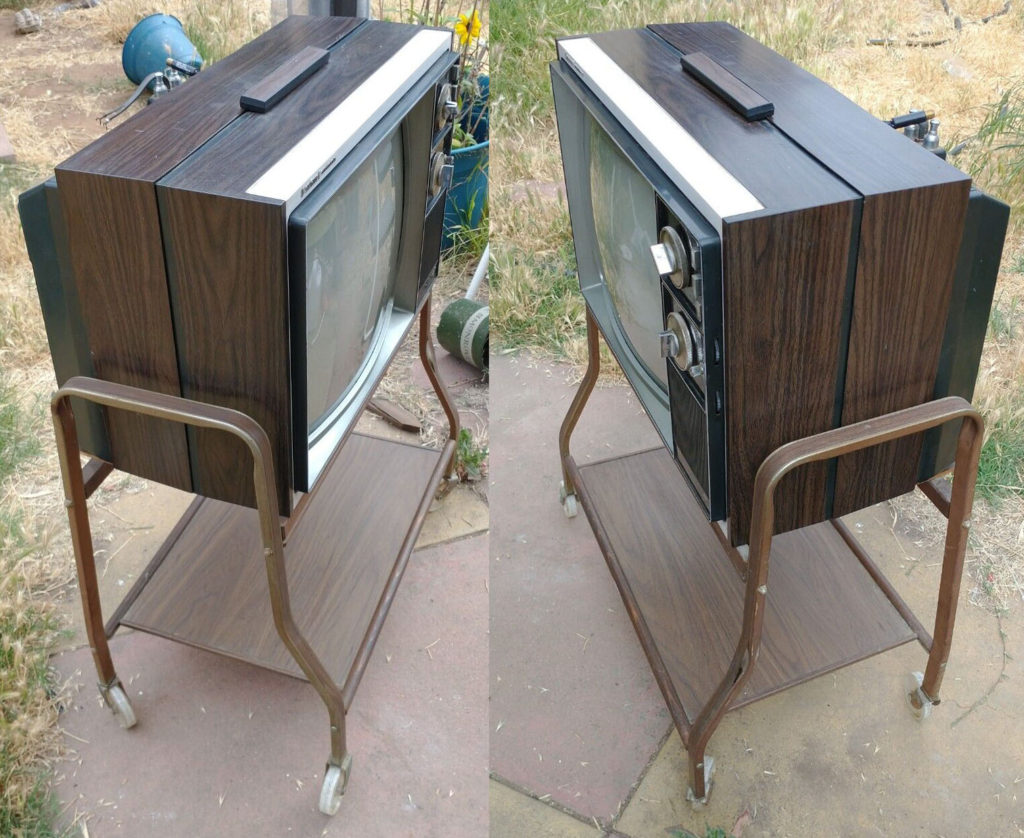
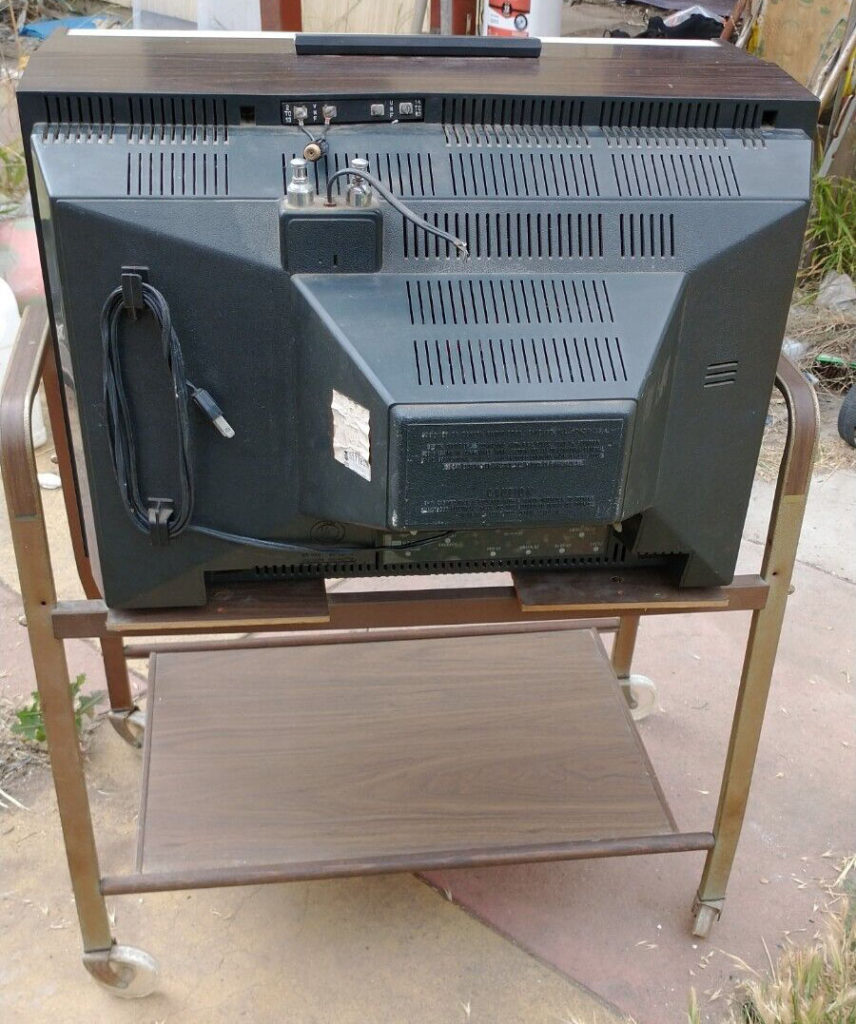
This is the back of the television. Something we don’t see in the film.
RED DIAMOND CITY MOTEL
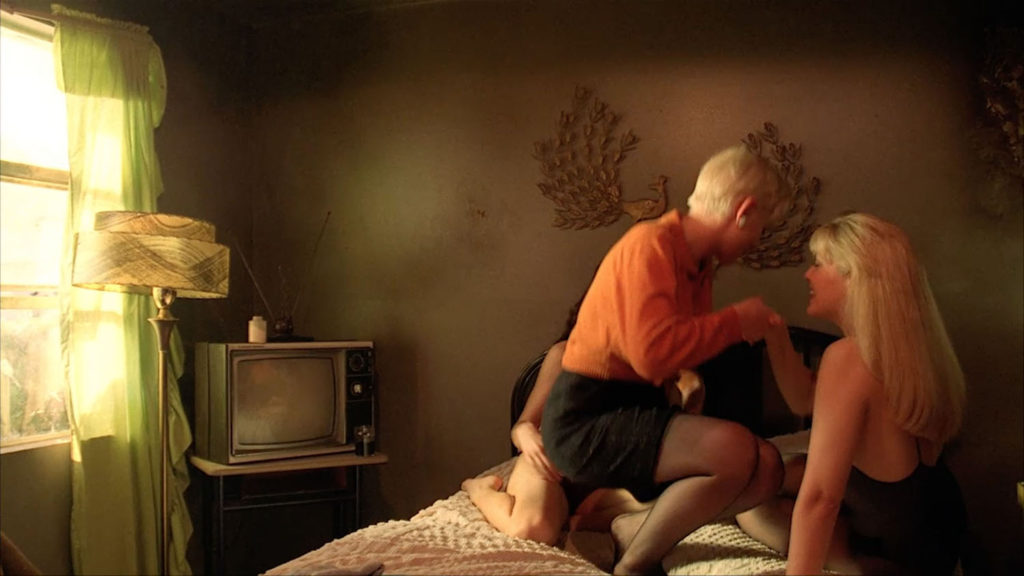
Surprisingly, the television makes another appearance in Room 6 at the Red Diamond City Motel as seen in The Missing Pieces. The only difference is the “bunny ear” antenna on top of the television set.
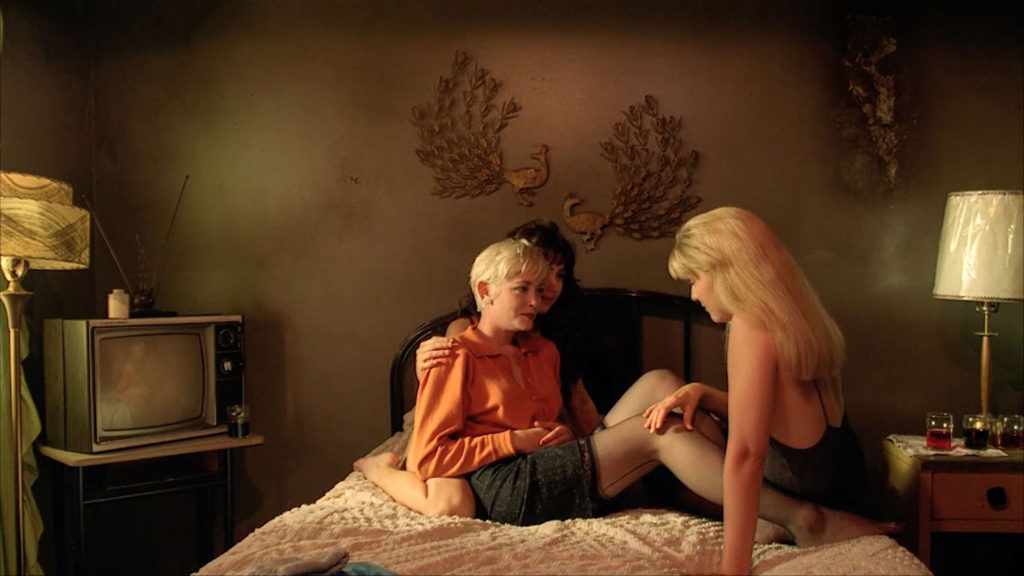
This scene was shot outside of North Bend, Washington on September 16, 1991, about a month and a half before the T.V. smashing scene was shot in California. I’m making a guess but I believe it’s literally the same television prop that was later destroyed.
Discover more from TWIN PEAKS BLOG
Subscribe to get the latest posts sent to your email.

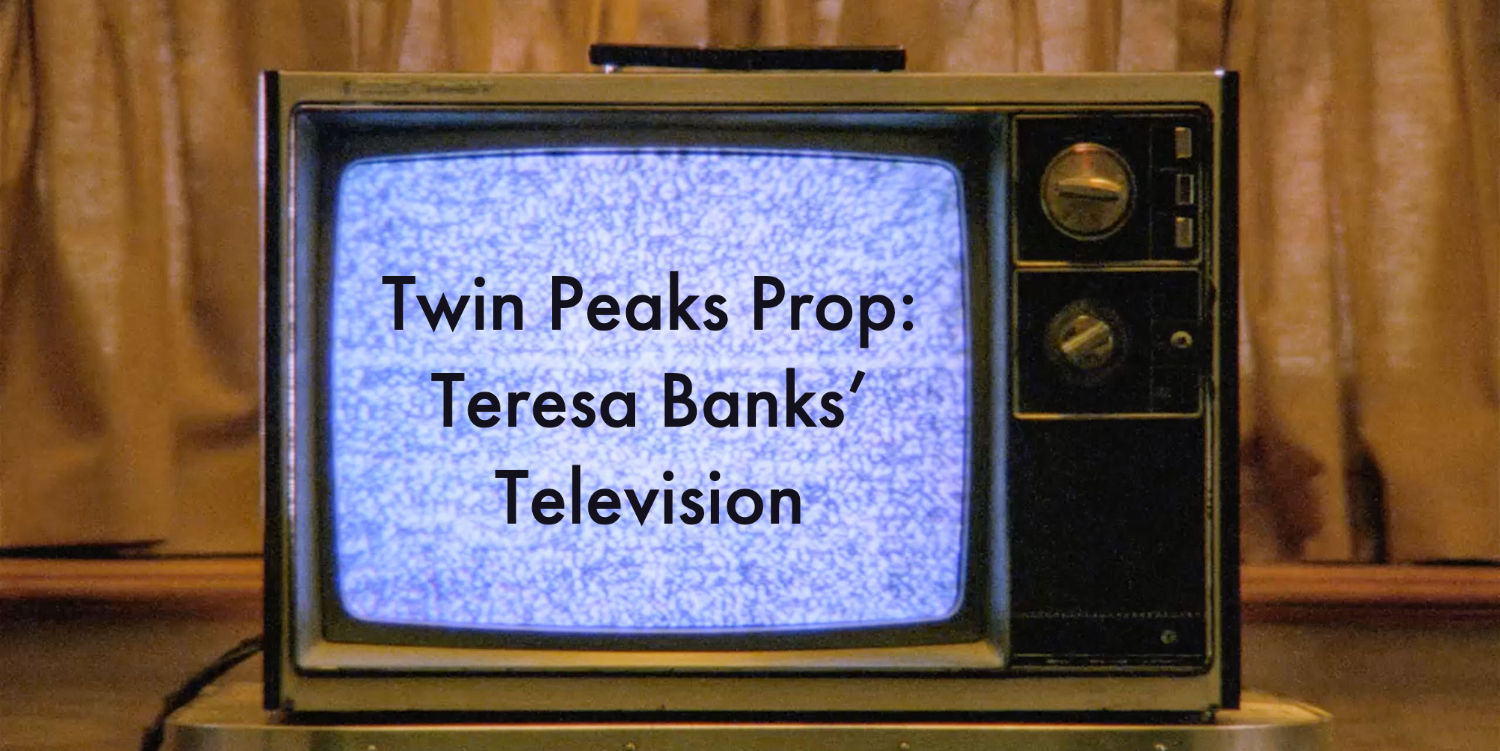

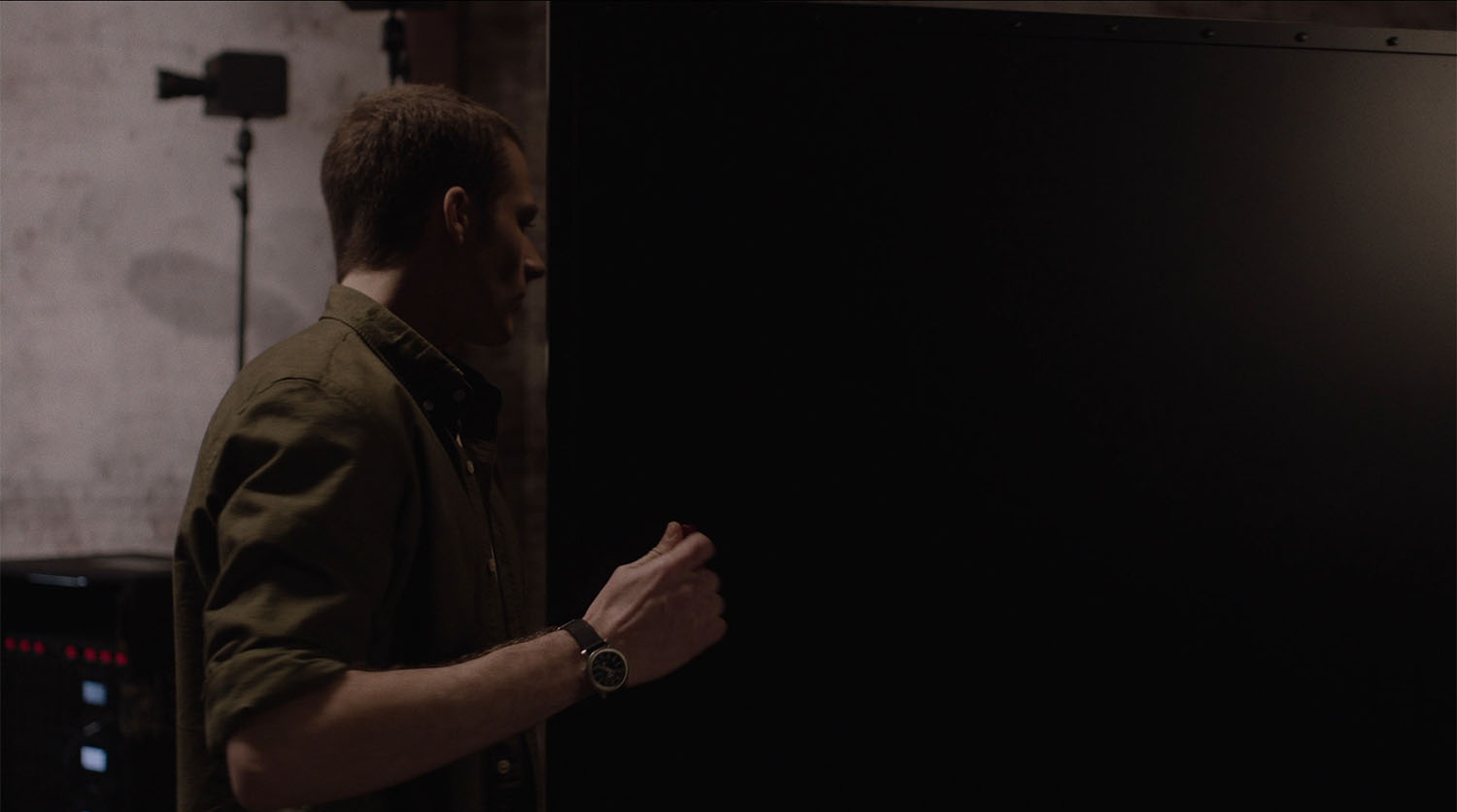


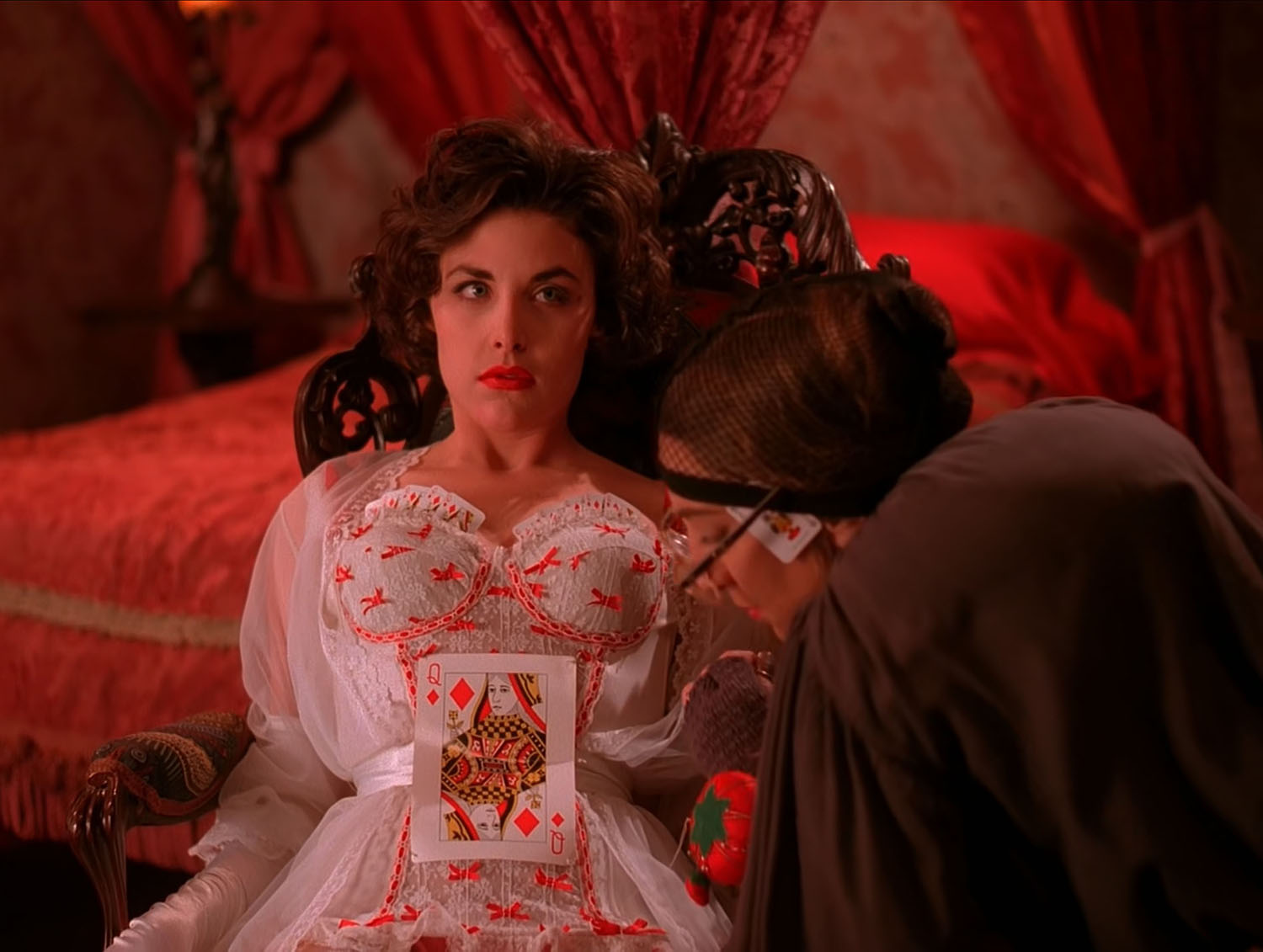
👍 (Agent Cooper gesture style 😉
What about the TV seen in the pilot that Dale Cooper plays the footage of Laura Palmer with Donna dancing on? I’ve been hunting for it, and I’ll raise the bounty 10$ just to identify it.